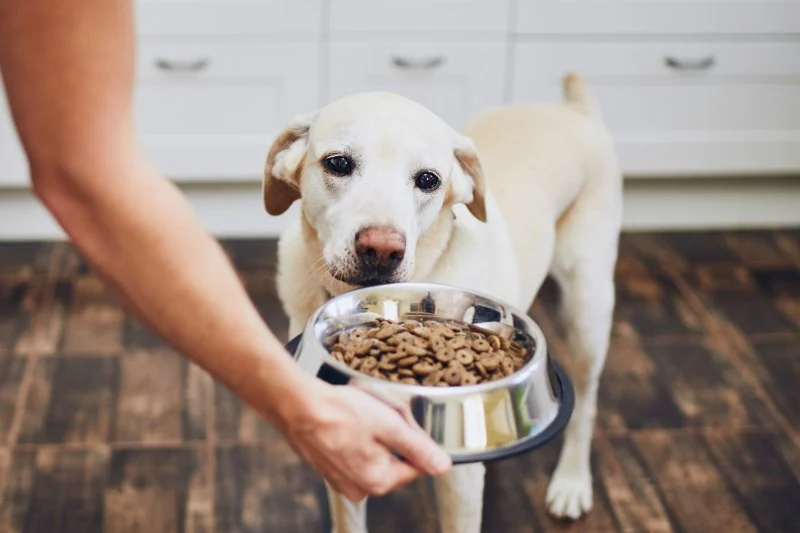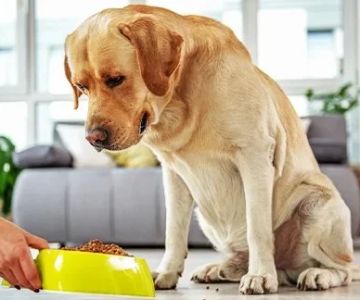
How to Transition a Senior Pet to Easier-to-Eat Food
- Understanding the Challenges
- Why Transitioning Matters for Senior Pets
- Step-by-Step Guide to a Smooth Transition
- Real-life Case Study: Transition Success
- Recommended Products for Senior Pets
Transitioning your senior pet to easier-to-eat food is essential as they age. Older pets often face difficulties eating due to dental issues, loss of appetite, or slower digestion. This process is crucial to maintaining their health and ensuring they get the right nutrients without stress.

Indy Paws Veterinary Hospital
New PalestineHancock CountyIndiana
7299 US-52, New Palestine, IN 46163, USA
Why Transitioning Matters for Senior Pets
As pets age, they can develop various health conditions such as arthritis, weakened teeth, or even loss of smell, all of which affect their ability to enjoy meals. Soft or more palatable foods can make eating less of a chore, allowing your senior pet to enjoy their meals while also improving their overall health.
Furthermore, a smooth transition to easier-to-eat food ensures that your pet maintains a balanced diet without compromising their digestive health. Senior pets may require different nutrients, so the right food is essential for managing conditions like joint pain, digestive issues, and even weight management.

Lovet Pet Health Care - Beardsley
GlendaleMaricopa CountyArizona
20210 N 59th Ave C101, Glendale, AZ 85308, USA
Step-by-Step Guide to a Smooth Transition
1. Consult Your Vet – Before making any changes to your senior pet's diet, it's important to consult a veterinarian. They can help you identify any underlying health issues that might be affecting your pet’s eating habits and guide you on the best type of food for their condition.
2. Introduce New Food Gradually – Start by mixing the new food with your pet’s current food. Begin with a ratio of 25% new food and 75% old food, and gradually increase the amount of new food over a week or two. This helps your pet’s digestive system adjust without causing discomfort.
3. Choose Soft, Nutritious Options – For senior pets, opt for food that is soft and easy to chew. Look for options that are high in essential nutrients, such as omega fatty acids, vitamins, and minerals, while being gentle on their digestion.
4. Monitor Their Response – Keep an eye on your pet’s eating habits and overall health. If they seem to struggle with the new food or show signs of allergies or discomfort, contact your vet for advice on adjusting the food type or brand.
Real-life Case Study: Transition Success
Consider the story of Bella, a 12-year-old Labrador who had been experiencing dental issues. Bella’s owner noticed that she was taking longer to finish her meals and was reluctant to eat. After consulting with a vet, they decided to switch to softer food designed for senior pets. Over the course of two weeks, Bella's owner gradually mixed the new food into her regular meals, eventually transitioning to 100% senior-specific food.
Not only did Bella regain her appetite, but she also showed improved energy levels and a healthier coat. This case highlights how a gradual transition to softer, more nutritious food can improve the overall well-being of senior pets.
Recommended Products for Senior Pets
When transitioning your senior pet to easier-to-eat food, it's essential to select the right products. At Pet & Puppy, we offer a wide range of food options specifically designed for senior pets. These products are formulated to support joint health, digestion, and overall vitality.
We recommend soft kibble, wet food, and even freeze-dried options, all tailored to meet the unique dietary needs of senior pets. Check out our store for more details on the best products to help your furry friend live their best life.







 Princeton Veterinary Hospital4.0 (821 reviews)
Princeton Veterinary Hospital4.0 (821 reviews) Thomas Ridge Kennels4.0 (17 reviews)
Thomas Ridge Kennels4.0 (17 reviews) All Creatures Animal Hospital4.0 (354 reviews)
All Creatures Animal Hospital4.0 (354 reviews) Fatty Paws Pet Boutique0.0 (0 reviews)
Fatty Paws Pet Boutique0.0 (0 reviews) CityVet | Lone Mountain Veterinary & Urgent Care4.0 (104 reviews)
CityVet | Lone Mountain Veterinary & Urgent Care4.0 (104 reviews) Petnificent Picks5.0 (1 reviews)
Petnificent Picks5.0 (1 reviews) How to Transition a Senior Pet to Easier-to-Eat Food: A Comprehensive Guide
How to Transition a Senior Pet to Easier-to-Eat Food: A Comprehensive Guide The Hidden Dangers in Common Pet Supplies: What You Need to Know
The Hidden Dangers in Common Pet Supplies: What You Need to Know Managing Chronic Conditions in Pets: Essential Diet, Medication & Lifestyle Tips
Managing Chronic Conditions in Pets: Essential Diet, Medication & Lifestyle Tips How to Build a Pet Emergency Kit: Essentials You Need
How to Build a Pet Emergency Kit: Essentials You Need Best Practices for Pet Grooming Frequency by Breed: Keeping Your Pet’s Coat Healthy
Best Practices for Pet Grooming Frequency by Breed: Keeping Your Pet’s Coat Healthy The Effect of Seasonal Allergies on Pets & How to Help
The Effect of Seasonal Allergies on Pets & How to Help